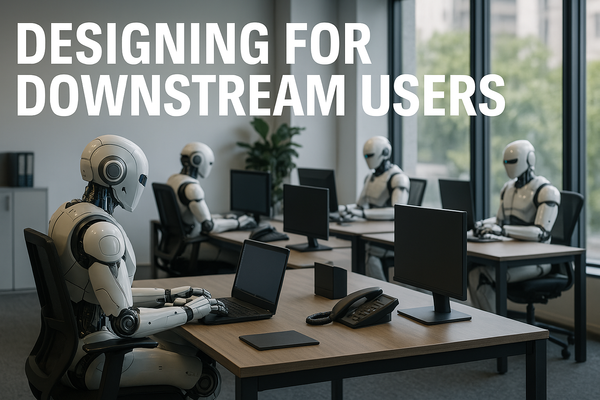Staying Agile in AI Development—Managing AI Roadmaps in Fast-Paced Environments

AI development, unlike traditional software engineering, isn’t a straight line. Models need to adapt to new data, user behaviors, and shifting business conditions. In fast-paced environments, agility becomes more than just a buzzword—it’s a necessity.
The key to success in AI is to build systems that can evolve over time, respond to feedback, and pivot quickly when new insights emerge. For product leaders, this means crafting an AI roadmap that allows for rapid experimentation and continuous learning. In this final post of our AI centered series, we’ll dive into strategies that will help you manage AI development in a fast-moving landscape while staying aligned with business goals.
Embracing Flexibility and Iteration
One of the first things to accept when building AI products is that your model will never be finished. Unlike static product features, AI needs constant iteration. As more data is collected, as user behaviors change, and as market dynamics shift, the model must evolve. This iterative nature requires an agile approach to development and deployment.
Look at Tesla’s Autopilot system. Tesla doesn’t wait for a perfect product before deploying it. Instead, they release iterative improvements to their AI-powered driving assistance, relying on real-world driving data to continuously improve the system. Each update makes the car smarter, safer, and more responsive to changing conditions.
Actionable Tip: Build flexibility into your AI roadmap by scheduling regular evaluation cycles. Every quarter, assess your model’s performance and ask if it needs to be retrained, tweaked, or updated based on new data. This ensures your AI adapts to changes in real time without getting stuck in the past.
Aligning AI Development with Business Shifts
AI doesn’t operate in a vacuum. As your business priorities shift—whether due to market trends, customer feedback, or internal changes—your AI efforts should shift as well. But if your roadmap is too rigid, it becomes hard to pivot quickly, and you risk wasting resources on models that are no longer relevant.
Consider Twitter’s real-time trend detection. In a fast-paced platform like Twitter, trending topics change by the second. To keep up, Twitter’s AI models need to constantly update and align with user activity. If the AI behind trend detection were too rigid, it would miss critical shifts in conversations, losing its value. Twitter stays relevant by continuously aligning its AI with user-generated content and external events.
Actionable Tip: Review your AI roadmap at regular intervals and ensure it aligns with current business priorities. Are your AI models still solving the most pressing problems? Has your user base changed in a way that requires different solutions? If the answer is yes, adjust your priorities accordingly.
Rapid Experimentation and Fail-Fast Approaches
One of the best ways to stay agile in AI development is to adopt a fail-fast mentality. Instead of waiting for months to launch a perfect AI feature, try rapid experimentation—testing out smaller ideas, learning from the results, and iterating quickly. The goal is to get real-world feedback as early as possible, allowing your team to pivot when necessary.
This approach has been used successfully by Google’s DeepMind, a company known for its groundbreaking AI research. When developing AlphaGo, DeepMind’s AI that defeated a world champion Go player, they didn’t start with the final, polished model. Instead, they ran countless small experiments, rapidly testing different strategies and architectures until they found the most effective approach.
Actionable Tip: Encourage your teams to build small, testable AI features rather than aiming for large, monolithic releases. Run A/B tests, pilot programs, and early betas to gather data before scaling. By testing quickly and learning from failures, you’ll avoid investing in ideas that don’t work and focus on the ones that do.
Building Cross-Functional Collaboration
Agile AI development requires close collaboration between product, data science, and engineering teams. Since AI models are highly iterative, it’s essential that all teams remain in sync throughout the process. If data scientists build models in isolation or engineers deploy models without considering new data, the product may fail to deliver on its potential.
At Amazon, cross-functional teams are the backbone of their AI-powered recommendation engine. Data scientists, engineers, and product managers work together to ensure that AI models continuously evolve based on customer behavior and purchasing patterns. This collaboration allows Amazon to fine-tune its recommendations, providing real-time value to customers.
Actionable Tip: Hold regular cross-functional stand-ups and retrospectives with your product, engineering, and data science teams. Ensure there’s a constant flow of communication so that any changes to data or models are reflected in the roadmap. Keep everyone on the same page about what’s working, what needs improvement, and where to focus next.
Managing Costs in Fast-Moving AI Environments
Staying agile doesn’t mean losing sight of costs. AI projects can balloon if not carefully managed, especially in fast-paced environments where new features and experiments are constantly introduced. Costs for cloud storage, data processing, and retraining models can escalate quickly if you’re not careful.
Example: Zillow famously spent millions on building and maintaining their Zestimate algorithm, which eventually became too costly relative to its business value. Zillow later had to scale back its ambitious AI-driven house-flipping operation, partly due to the unexpected costs of running AI models in a fast-paced market.
Actionable Tip: Build cost-management strategies into your AI roadmap. Use tools that monitor the costs of cloud infrastructure, data processing, and model training. Regularly evaluate whether your AI initiatives are delivering enough business value to justify the expenses. If something isn’t yielding results, be willing to cut it or pivot.
Conclusion: Staying Agile While Extracting Value from AI
As you wrap up your AI development journey, the most important takeaway is to stay agile and adaptable. AI models will evolve, your data will shift, and your business priorities will change. Your roadmap should reflect this reality. By embracing flexibility, rapidly experimenting, aligning with business needs, and fostering collaboration, you can stay ahead in fast-paced environments.
Remember that staying agile isn’t just about speed—it’s about being able to pivot when necessary and ensuring your AI initiatives continue to deliver business value.
In the end, the key to successful AI development lies in balancing speed with strategy, agility with alignment, and cost with value. If you can manage these tensions, you’ll be well-positioned to build AI systems that not only work today but continue to deliver value tomorrow.



